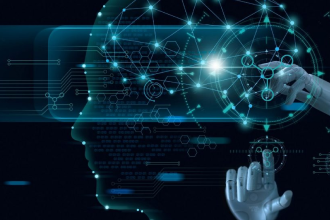- Inicio
- Blog
- Data Strategy
- Introduction to Machine Learning, Models and Applications
Introduction to Machine Learning, Models and Applications
In the dynamic world of marketing, the constant search for new strategies and innovative technologies is a necessity for companies that want to stand out and succeed in a highly competitive market. In this context, Machine Learning has emerged as a revolutionary discipline that is transforming the way brands understand their customers and design effective strategies.
Through artificial intelligence and data analysis, Machine Learning enables machines to learn and improve on their own, without explicit programming. This learning capability enables them to identify hidden patterns in large data sets and make accurate decisions based on these observations. In essence, Machine Learning empowers companies to develop smarter and more personalized strategies, allowing them to better understand their customers and anticipate their needs.
In the first part of this article, we will establish the basics of Machine Learning, clearly defining its meaning and examining the different types of machine learning, such as supervised learning, unsupervised learning and reinforcement learning. Each of these approaches offers unique advantages and applications in the marketing field, and understanding how they work is essential to making the most of this disruptive technology.
As we move forward, we will dive into Machine Learning models and their application in marketing. We will explore how supervised learning allows us to predict behaviors and optimize campaigns. We will also unravel the secrets of unsupervised learning, which allows us to discover patterns and segment customers more effectively. We cannot forget reinforcement learning, which offers unique opportunities to optimize customer interaction and improve customer experience.
Then, we will delve into the exciting world of practical applications of Machine Learning in marketing. We will see how personalized recommender systems drive sales by offering relevant products to each customer. We will also explore how segmenting customers into specific groups improves the effectiveness of targeted marketing campaigns. In addition, sentiment analysis will allow us to understand brand perception and customer satisfaction through their comments and reviews.
Ultimately, this article highlights how Machine Learning not only revolutionizes marketing today, but also offers a fascinating glimpse into the future. By understanding the emerging trends and growth potential in the Machine Learning field, companies can anticipate their customers' needs and adapt their strategies to stay ahead of the industry.
Get ready to dive into the exciting world of Machine Learning applied to marketing. You will discover how this transformative technology is driving efficiency, personalization and success in the information age and customer experience. Let's start this journey to marketing excellence with the power of Machine Learning!
Machine Learning Fundamentals
What is Machine Learning?
Machine Learning is a branch of artificial intelligence that allows machines to learn autonomously through experience and improve their performance on specific tasks without direct human intervention. Instead of being explicitly programmed to perform a task, machines use algorithms and mathematical models to analyze large data sets and extract patterns, trends and relationships. This acquired knowledge enables them to make informed and accurate decisions when faced with new situations.
The learning process in Machine Learning resembles how humans acquire knowledge. Like children learning to recognize objects, animals or letters from examples and drills, machines learn through repeated exposure to data and the feedback associated with each action or outcome. As more data is fed to the model, it becomes more accurate and effective at its tasks.
Types of Machine Learning
Machine Learning is classified into different types, depending on the nature of the data and the learning approach. The three main types are:
Supervised Learning:
Supervised Learning involves training the model using a labeled data set, where each sample is associated with a label or desired output. The goal of the model is to learn to map the input features to the correct output labels. During the training process, the algorithm is tuned to minimize the difference between the predictions and the actual labels. Once trained, the model can make accurate predictions for new data never seen before.
Unsupervised Learning:
In Unsupervised Learning, the model is trained on an unlabeled data set. The main task of the algorithm is to identify patterns, similarities or groupings within the data without having prior information about the expected categories or results. The goal is to discover hidden structures in the data and segment them into homogeneous groups, which helps to understand the nature and internal relationships of the data.
Reinforcement Learning:
Reinforcement Learning is based on the concept of interacting with an environment to learn to make optimal decisions. The model, known as an agent, performs actions within an environment and receives feedback in the form of rewards or penalties based on its actions. The agent's goal is to maximize rewards over time, which leads it to learn the best strategy to achieve its goals in the given environment.
In the next section, we will dive into specific Machine Learning models and discuss how each type of learning is applied in the marketing field to improve decision making and deliver more personalized customer experiences.
Machine Learning Models and how they work
Machine Learning is based on a variety of models and algorithms that allow machines to learn and perform specific tasks efficiently. Each type of machine learning, supervised, unsupervised and reinforcement learning, uses different models to address different problems and situations. In this section, we will explore in depth the Machine Learning models and how they work in each learning approach.
Supervised Learning:
As seen in the previous section, Supervised Learning is one of the most common and effective approaches to Machine Learning. Its main goal is to train a model to make accurate predictions based on labeled data.
Description and Examples:
A common example of Supervised Learning is image recognition. The model is trained on a set of labeled images, where each image has a label indicating the class or category to which it belongs (e.g., dog, cat, car, etc.). The algorithm analyzes the visual features of the images and learns to recognize patterns that distinguish each class. Once trained, the model can classify new images with high accuracy.
Marketing Use Cases:
In marketing, Supervised Learning is widely applied to predict future results and optimize campaigns. For example, a model trained with historical customer data can predict the probability of a customer churn in the future. With this information, companies can implement preventive strategies to retain customers at risk of churn.
Unsupervised Learning:
Unsupervised Learning focuses on discovering hidden patterns and structures in unlabeled data sets.
Description and Examples:
An example of Unsupervised Learning is customer segmentation. The model analyzes the behavioral data and preferences of customers, without previously knowing their categories. Using clustering techniques, the algorithm identifies patterns of similarity among customers and divides them into different segments. These segments may represent groups with similar interests or needs.
Marketing Use Cases:
Customer segmentation is just one of the many use cases for unsupervised learning in marketing. These techniques allow companies to personalize their offers and messages for each segment, resulting in more effective advertising campaigns and greater customer satisfaction.
Reinforcement Learning:
Reinforcement Learning focuses on teaching an agent to make decisions to maximize a reward over time.
Description and Examples:
An example is the training of an agent to play a video game. The agent performs actions in the game and receives positive rewards when he makes progress and achieves goals, and negative rewards when he fails or loses lives. Through trial and error, the agent learns to make better decisions for greater rewards over time.
Marketing Use Cases:
Although Reinforcement Learning is less common in direct marketing applications, it has the potential to optimize advertising strategies and personalize the customer experience. For example, an intelligent agent can learn to adapt the content or offer of a web page to maximize the conversion rate based on visitor behavior.
In the next section, we will explore how these Machine Learning models are applied in practical marketing situations and how they drive more effective strategies and more personalized customer experiences.
Machine Learning Applications in Marketing
Machine Learning has revolutionized the way companies approach marketing, providing a wide range of applications that improve the efficiency, personalization and effectiveness of strategies. In this section, we will explore some of the most impactful applications of Machine Learning in marketing and how they transform the way brands connect with their audiences.
Customized Product Recommendations:
One of the most well-known applications of Machine Learning in marketing is the generation of highly personalized product recommendations. This is achieved through two main approaches:
Collaborative Filtering:
Collaborative filtering is based on the idea that if a group of users share similar interests in the past, they are likely to share interests in the future. The Machine Learning model analyzes users' past behavior and finds patterns of shared preferences. With this information, it can recommend products to a user based on the choices of other users with similar tastes.
Content Based Filtering:
In content-based filtering, the model analyzes product features and attributes, as well as the user's interaction history. By comparing these features with the user's past preferences, the model can make recommendations that align with the user's specific interests and needs.
Customer Segmentation:
Customer segmentation is a crucial strategy in marketing to target specific campaigns and messages to homogeneous groups of customers. Machine Learning enables more accurate and detailed segmentation by identifying hidden patterns in the data.
Grouping techniques:
Using Unsupervised Learning algorithms, such as K-means, agglomerative clustering or DBSCAN, companies can group their customers into segments based on similar characteristics and behaviors. These segments can represent specific demographic groups, common interests or similar buying patterns.
Benefits for Targeted Marketing:
By segmenting customers into specific groups, companies can design highly targeted and personalized marketing campaigns for each segment. This improves the relevance of messages and offers, which increases the likelihood of customer conversion and loyalty.
Sentiment Analysis:
Brand reputation and customer satisfaction are critical factors for success in today's marketplace. Machine Learning offers a powerful tool to analyze the sentiment behind customer comments and reviews.
Extraction of Information from Customer Comments:
Using Natural Language Processing (NLP) techniques, Machine Learning can analyze large amounts of customer comments and reviews on social networks, websites and other media. The algorithm automatically identifies whether comments are positive, negative or neutral, providing an overview of brand perception.
Improving Brand Perception and Customer Satisfaction:
With sentiment analysis, companies can quickly detect problems and areas for improvement in their products or services, allowing them to address concerns and improve customer satisfaction. They can also leverage positive feedback to promote their brand and strengthen customer trust.
These are just some of the applications of Machine Learning in marketing. Technology continues to evolve and open new opportunities for companies to optimize their strategies, deliver personalized experiences and increase their competitive advantage.
In the next section, we will recap the key concepts of Machine Learning and its importance in marketing, while exploring future trends and the potential growth of this transformative technology.
Conclusions
In this journey through the exciting world of Machine Learning applied to marketing, we have discovered how this disruptive technology has revolutionized the way companies understand their customers, design strategies and deliver personalized experiences. Machine Learning has proven to be an invaluable tool for modern marketing, empowering brands to make data-driven decisions and adapt quickly to an ever-changing business environment.
The fundamentals of Machine Learning have revealed to us the autonomous nature of machine learning, where data analysis and pattern identification play a crucial role in intelligent decision making. Different types of machine learning, such as supervised, unsupervised and reinforcement learning, have proven to be powerful approaches with varied and promising applications in the field of marketing.
Machine Learning models, from personalized recommendation systems to customer segmentation and sentiment analysis, have given us a glimpse of the transformative power of this technology in marketing. With intelligent algorithms and deep data insights, brands can deliver more relevant experiences, increase customer retention and strengthen their position in the marketplace.
It is undeniable that Machine Learning is redefining marketing in the 21st century. The ability to deliver accurate recommendations, segment customers into more meaningful groups and analyze customer sentiment has ushered in a new era in the brand-customer connection, driving customer satisfaction and loyalty to unprecedented levels.
Like any evolving technology, Machine Learning has unlimited growth potential. As the processing power and amount of data continues to increase, the applications of Machine Learning in marketing will continue to expand and improve. Companies that adopt this technology and take advantage of its benefits will be able to position themselves ahead of the competition, overcome changing market challenges and anticipate their customers' needs.
In short, Machine Learning is not only a powerful tool for marketing, but a key ally on the road to excellence in the information age and customer experience. By understanding and strategically applying this technology, companies can unlock the hidden potential of their data, improve their strategies and deliver personalized experiences that captivate and delight their customers.
It's time to embrace the power of Machine Learning, to move towards smarter, more effective and customer-centric marketing. The future is bright, and brands that embrace this transformation will be poised to thrive in the dynamic and exciting world of marketing in the digital age. The journey to success with Machine Learning has just begun!



